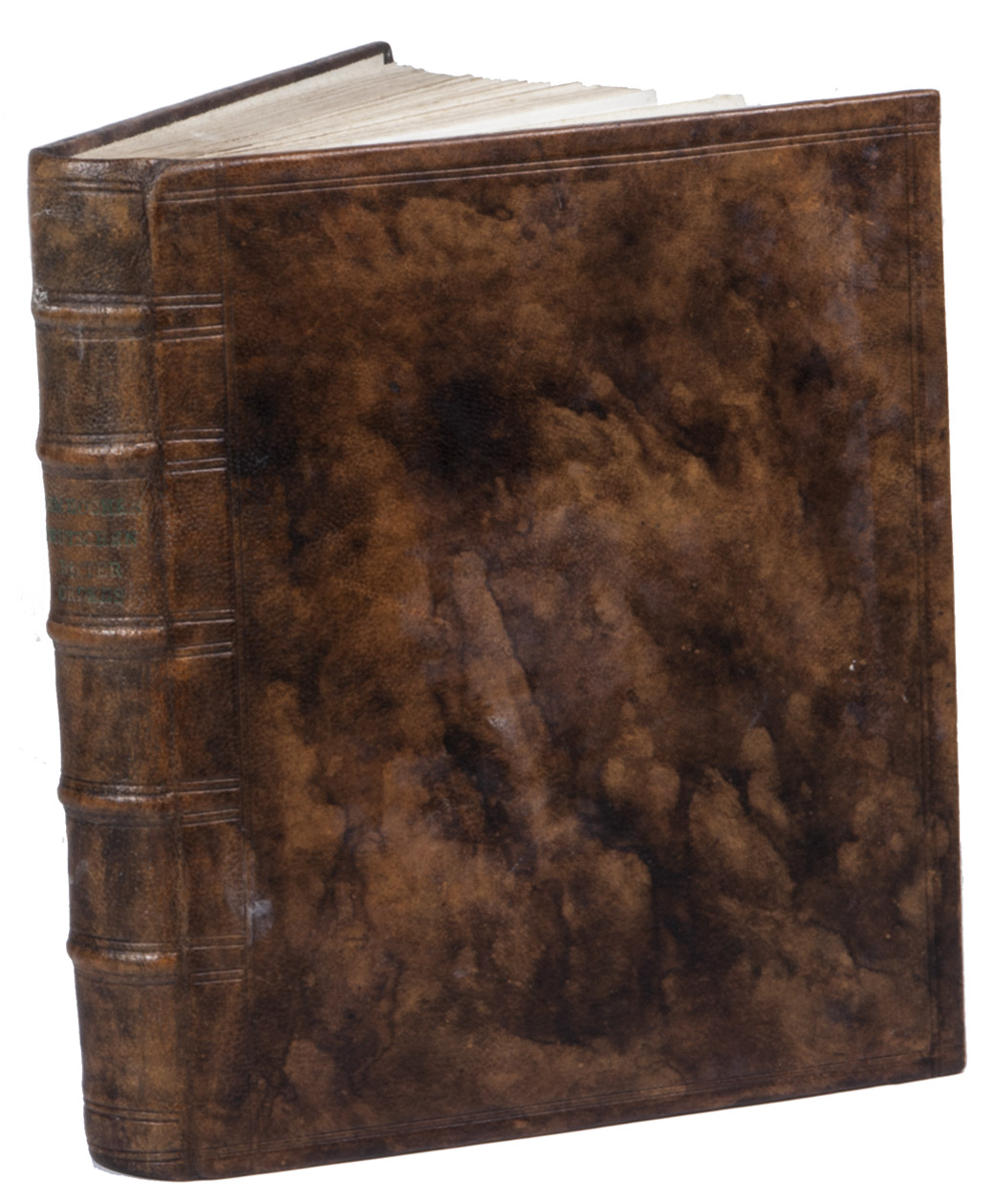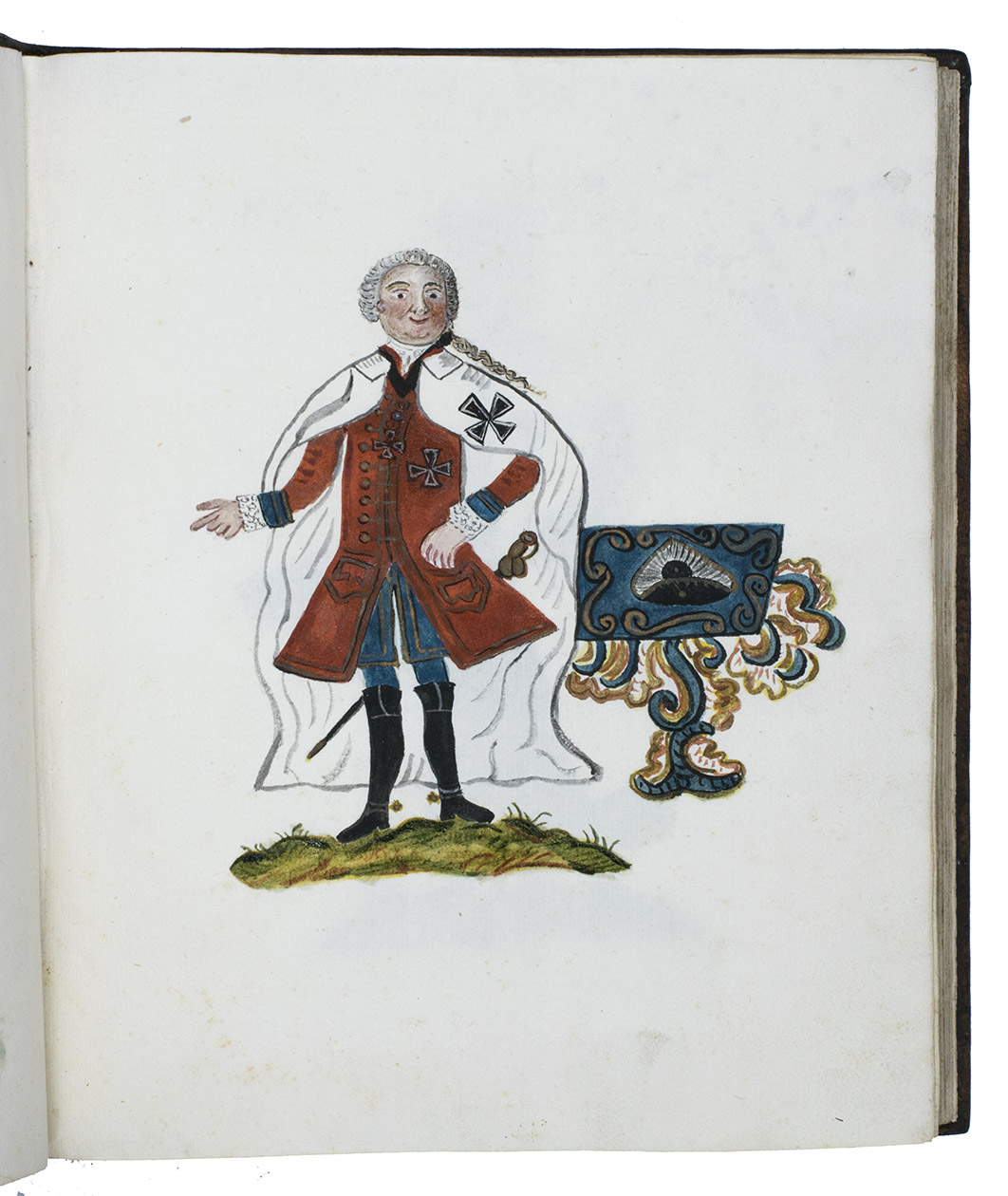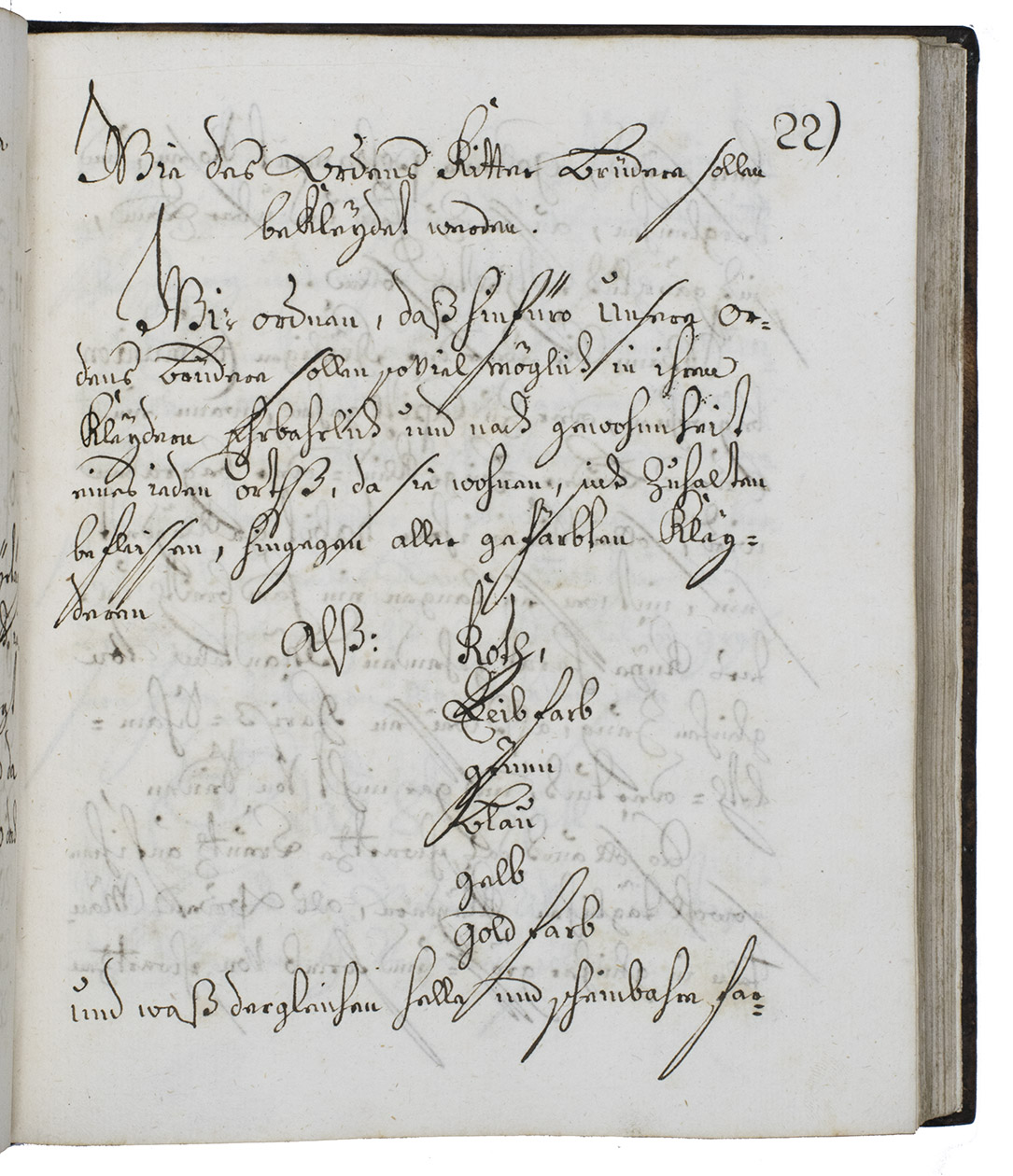[MANUSCRIPT - GERMAN & LATIN - HERALDRY - LITURGY]. MAYER, Lieven.
(Drop-title on f. 5r:) Der hochen Deutschen Ritterordens Buech ...
[Germany], [after 1606, perhaps before 1618]. 4to. Manuscript in German and Latin on paper, written in a 17th-century hand. With 3 heraldic crosses showing the coats of arms of the Teutonic Order (a black Maltese cross) and 4 drawings showing costumes of several members of the order, all executed in watercolour highlighted with eggwhite. 20th-century mottled sheepskin, sewn on 5 supports, each board with a frame of blind double fillets crossing at the corners, with blind double fillets across the spine, title stamped in green roman capitals in the 3rd of 6 compartments. [5], 129 ll.
€ 8,500
Highly interesting 17th-century German manuscript of the Order of Brothers of the German House of Saint Mary in Jerusalem, commonly known as the Teutonic Order or German Order. Founded in 1190, primarily as a military society with its Teutonic Knights serving as Christian crusaders in the Holy Land during the Middle Ages, the Order gradually evolved into a broader Catholic religious institution, but did not lose its military function until the 20th century.
The present manuscript opens with a short history of the Order, from 1190 to 1606. It continues with statutes, divided into several chapters, which are intertwined with prayers, the latter in Latin. This combination of statutes and religious prayers, shows that the Teutonic Order was not merely a military order, but by this time had a strong focus on religion. This is also reflected in the liturgical calendar (part of a chapter of the statutes) showing the saints and their feast days as celebrated by the Order. A note at the end of the work (leaf 125) says Maximilian (meaning Maximilian III of Austria) approved the statutes. Maximilian (1558-1618) was the Grand Master of the Order from 1585 to his death. Since he died in 1618 and the manuscript refers to the year 1606, the text can very likely (and the manuscript possibly) be dated between those years. The last 5 leaves contain what we believe are the names of the several Landkomturs who ruled the different bailiwicks, which consisted of several commanderies in the Holy Roman Empire. These Landkomturs, who were again subordinated to the Grand Master, were very often important German noblemen.
Striking for texts like this is that the present manuscript is illustrated. The first illustrated leaf contains three black Maltese crosses: coats of arms of the Teutonic Order, including that of the Grand Master. The Grand Master's coat of arms is a black cross with a golden cross superimposed on it, with an imperial eagle on a central shield. Four further illustrations show the typical costumes of several members of the Order. The second illustration in this series, for example, shows the white surcoats with a black cross, which were typically worn by the Knights since 1205. Altogether a rare survival, being a rich source of information on the formal organisation of the most important 17th-century German order, but also on their statutes and their religious customs and habits. It beautifully reflects both the religious and the military character of the Teutonic Order, an order that should not be underestimated in the history of German nobility.
A 21st-century inscription in pencil on the first endleaf indicates the manuscript was formerly part of the collection of the Belgian historian and politician Philippe Kervyn de Volkaersbeke (1815-1881). In very good condition, with only a few very minor spots.
Related Subjects:












